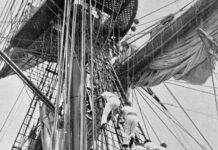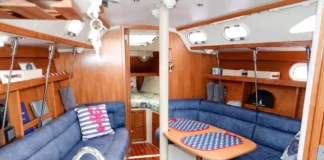This months report on man-overboard recovery (pages 7-11) offers a chilling reminder of why our testers spend so much time evaluating jacklines, harnesses, and other equipment designed to keep us onboard. Safe recovery of a person in the 288 water leaves little margin for error: “A two-minute spinnaker takedown can leave a victim more than a quarter-mile away,” writes Technical Editor Ralph Naranjo, author of that report. Unlike our most recent studies of man-overboard equipment (November 2005 and January 2006), this article focuses primarily on technique, and for a good reason. When it comes to a successful recovery, finely-tuned boathandling skills are paramount. There is no shortage of similar studies regarding the recovery of a man overboard under sail. So we were surprised to find that guidance from respected organizations didnt seem to add up. We began to wonder whether some of the current advice on crew-recovery maneuvers under sail-while well-suited for racing crews-might not be the best choice for shorthanded cruising sailors. We also were worried that some of the instructional material may be outdated, particularly given the latest advances in boat design and safety equipment. Soon enough, we got the chance to see whether our concerns had any basis. Last year, Dan Rugg, sailing master at the U.S. Naval Academy, contacted Naranjo regarding an educational program of lectures and onboard crew-recovery training that he was conducting with the Philadelphia Sailing Club. For almost two decades, Rugg has been working with midshipmen at the Naval Academy and conducting man-overboard training. His teachings are based on a blend of Navy standards and those prescribed by U.S. Sailing, the nations governing body for competitive sailing. Rugg, along with Naranjo, participated in the 2005 Crew-overboard Rescue Symposium on San Francisco Bay. Both are part of a growing cadre of professional sailors that recognizes that theres no single procedure that is right for all situations. Of all the key points that emerge from this report, I was particularly struck by this one: A successful recovery maneuver is an almost reflexive response. There is no time for deliberation. Well-honed instincts are our best ally against the shock and disorientation that can accompany a real-life MOB incident. And the only way to reach that state of readiness is through repeated practice. Im hoping that everyone who reads this article takes the time to practice the routines and maneuvers discussed in the article. Try them in a variety of conditions and find out which ones work best for your boat and crew. Frankly, these kinds of reports are of little use if they are confined to paper. Sailing Master Rugg, Naranjo, and the folks at the Philadelphia Sailing Club have done their part. Its up to us to put their work to good use.
Putting Words into Practice
Also with this article...











































